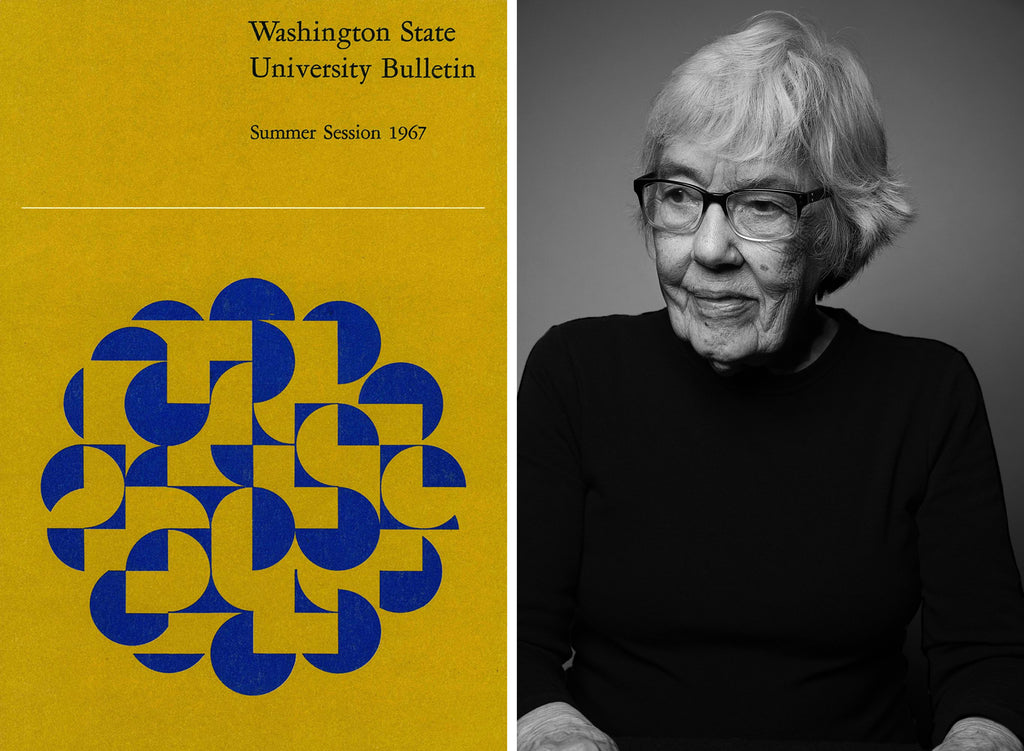Seeing the Big Picture with Ellen McFadden
Posted on 05 March 2016
 "How do I simplify it all? Down to a few short lines—to sift and sort—I get lost.”
"How do I simplify it all? Down to a few short lines—to sift and sort—I get lost.”
- Ellen McFadden
I picture her hunched over her computer, surrounded by her paintings, as 87 years of images, colors, and impulses run through to the tips of her fingers.
Our interview was only through email, yet I found myself charmed by Ellen McFadden’s charisma, her self-effacing wit, and perhaps above all else, her struggle to organize all this life, the one she’s imagined on canvas and the one she’s lived with all of us, into a few sentences for my blogging purpose.
A quick glance at her website, blog, or Flickr catalogue will validate my haste in calling her prolific, and with such a life lived and career had, it was admittedly tough to discern which of my questions were worthy of her. Nevertheless, I landed on a couple and she was kind enough to give me answers.
You seem to have always been making art. So let’s go back to the beginning: do you recall an initial moment or a period in time when you first discovered this passion?
The first time that I really experienced "art" was in the fifth grade at Kerns Grade School (1937, the Great Depression). There was no "art" program but the teacher had us color patterns on gridded paper. I had a box of crayons, not many others did, and I colored patterns and completed the project. The teacher then chose mine and mounted it on her desk. I was in love with the two dimensional surface forever after.  And beyond that, can you recall an early experience that demonstrated the importance of art in your life?
And beyond that, can you recall an early experience that demonstrated the importance of art in your life?
First, I had an amazing high school art teacher (Girls Polytechnic, a Portland high school that unfortunately no longer exists). As a student, I was also very familiar with local and Alaskan Native American work; I had lived and worked in Alaska.
Why were you in Alaska? And in what capacity?
My adopted father was employed by the American Can Co. and he was sent to renovate the Grimes Packing Co. Cannery in Ouzinkie, Alaska immediately after WWII. He had a throat operation so I became his voice. At 17, I learned a lot about the salmon packing business first-hand. I returned to Portland as I had been awarded a full-year’s scholarship at the Portland Art Museum School. My adopted father made every effort to train me for the Alaska salmon packing business but I just wanted to go to art school!
And so you did?
I spent many years, starting in 1939, taking Saturday classes at the Portland Art Museum School, and I eventually became a full-time student (around 1945). During that time, I was one of a few students that helped C.S. Price in the later years of his life. He and I became quite close.  What was the greatest lesson you learned from Price?
What was the greatest lesson you learned from Price?
I took groceries to his studio in the old Kraemer building (lots of canned salmon), and he spent hours talking about Blake, art and just reminiscing. He kept repeating “see the big picture” - meaning, don't get caught in the madness of the day, but always see the big picture. And that meant art to him.
You’ve worked in design, taught, and worked as an artist. How do these fields intersect? Or how did these worlds come together to form your work?
My husband, Irwin McFadden, followed the Neue Grafix approach in all of his design work through his years at Washington State University and the University of Iowa. When Irwin and I were both working and teaching at the University of Iowa, we met Ilya Bolotowsky and others. I also met George Rickey, the sculptor, and designed signage for his work.  How have specific locations and times influenced your art?
How have specific locations and times influenced your art?
I followed the new global modernization of design that first came through to America in the Swiss publication Neue Grafik, as well as the influence of the Bauhaus. Then came The Responsive Eye exhibit in Seattle. Another very strong influence for me was the Native American work (it was never thought of as "art") that I experienced in my own area of the Pacific Northwest.
Not until the last two decades did you focus more seriously on independent work and your paintings. What inspired that decision? And what inspires the direction of your paintings?
After 20 years of teaching, plus 15 years developing and supervising a work-study information design program with Hanford Nuclear and Kaiser Aluminum, plus other sites while teaching: it was time to retire. After retiring, I had the time and not the responsibilities. And the paintings are a continuation of seeing space, seeing color interact on that space.
Images of Ellen's work were gathered from her Flickr profile, which is worth a perusing.
She is represented by Ampersand, and you can inquire about available work there.
The photos of Ellen were made by the very talented Aaron Hewitt.